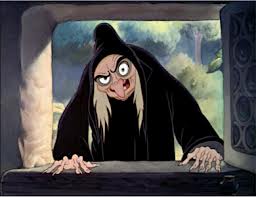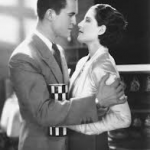Posted by Sarah
Here is Ann-Marie’s introduction to the screening of Snow White and the Seven Dwarfs:
Snow White and the Seven Dwarfs (Hand, 1938) 83 mins.
Disney’s first feature, based on the Grimm’s fairytale, took an enormous four years and a half to complete, and even then Walt was not happy, later re-touching the shimmering problem of the Prince. Known in the trade press as his ‘folly’ it became one of the biggest success stories of 1938 and redefined animation. Disney encountered many problems regarding how to bring realism to the screen, and later resolved this by adding depth to two-dimension with the multiplane camera. However, his real concern was how to give a character a real personality and appear alive on the screen. A gag a minute would no longer work for a feature film like it had his shorts. Disney’s solution was to use popular film elements such as menace, love and comedy to invoke emotional investment. Terri Martin Wright in her article ‘Romancing the Tale: Walt Disney’s Adaptation of the Grimm’s “Snow White”’ claims this film is really a romantic comedy, and whilst this claim has some merit, the film appears to be closer to a melodrama by definition.
This film is reminiscent of Victorian stage melodrama due to its focus on love and murder, after all ‘trouble was the proper business of the melodrama.’[1]. However, what seems most notable is the use of archetypes similar to that of both fairytale and stage. The Queen, voiced by stage actress Lucille LaVerne, is the best example of a villain. She swings her cape; enlarges her eyes in moments of distaste; dramatically closes curtains; skulks in the shadows; has a pet crow which she terrorizes, and most of all is vain and sadistic. In contrast Snow White is the epitome of the virginal girl, and the Prince (although he lacks any real personality) could be said to represent all the basic elements one would expect in the heroine’s love interest.
In the Victorian melodramas, (and perhaps melodramas in general) when ‘the play [was] getting too sad, […] it had to be relieved.’ [2] This is where the dwarfs play a role. The suffering of Snow White is contrasted with the gags supplied by them, specifically Dopey. The dwarfs are sturdy characters, and as we witness their affection for Snow White, our own grows. There are no complications, hidden meanings or disguises, they are the audiences’ comfort.
According to Harper’s Monthly Magazine Victorians would applaud at the sentiment of a woman standing by her man. Although this idea continued throughout the following century it is interesting that Disney feature films would focus on this need for true love through adversity, usually caused by a villain rather than purely circumstance. The last act in Victorian stage melodrama would wind-up in a way to make everyone happy, not unlike this particular Grimm fairytale. However, unlike the rushed Grimm ending, Disney’s Snow White seeks to show us not only her happiness, but also allows us to see all the happy dwarfs one last time to secure our need for total happiness.
Weak animation at the beginning and the end makes it seem more like a fairytale as it is ‘artificial and removed from reality.’[3] Snow White and the Queen’s features both seem less defined than that of the animals and dwarfs. This adds to the fantastical nature of the film, but also that of intense emotions shown by body language, for example, the Queen’s dramatic closing of the curtains.
Disney has been blasted for its mixed messages, for instance, ‘all people are valued, but really only lively, fun people are valued.’ [4]Whilst Disney films do mix messages the attempt at moral guidance remains inherent. Thus, from its archetypes; its plot; comic relief; heightened music; song to express heightened emotion; emotional (arguably Victorian)sentiment; exaggerated body movements; pathos; menace and comedy we can see clear traits of melodrama. However, above all, let us bask in the ‘moral glow of melodrama.’[5]
Further reading on Disney:
Barrier, Micheal, Hollywood Cartoons, American Animation in its Golden Age, (Oxford: Oxford University Press, 1999)
Gabler, Neal, Walt Disney, The Biography, (London: Aurum Press, 2008)
Ward, Annalee R., Mouse Morality, The Rhetoric of Disney Animated Film, (Austin: University of Texas Press, 2002)
Wells, Paul, Animation and America, (Edinburgh: Edinburgh University Press, 2002)
Disney and the Romantic Comedy:
Terri Martin Wright (1997), ‘Romancing the Tale: Walt Disney’s Adaptation of the Grimms’ “Snow White”’, Journal of Popular Film and Television, 25:3, 98-108
Victorian Melodrama:
Stephen Leacock, ‘The Drama as I see it’, Harper’s Monthly Magazine, 290-306
[1] Stephen Leacock, ‘The drama as I see it’, Harper’s Monthly Magazine p.292
[2] Stephen Leacock, ‘The drama as I see it’,p.294
[3] Michael Barrier, Hollywood Cartoons, American Animation it its Golden Age, (Oxford, Oxford University Press, 1999) p. 233
[4] Annalee R. Ward, Mouse Morality, The Rhetoric of Disney Animated Film, (Austin: University of Texas Press, 2002) p.122
[5] Stephen Leacock, ‘The Drama as I see it’ p.306




